
TEXTBOOK READING: Seeing the Light, pp. 28-56.
SUPPLEMENTAL READING:
Click on the titles below to open a new window of text to supplement the book, gleaned from a variety of sources, some even written by yours truly. The are presented in the order in which they would be introduced in the class lecture.
POINT SOURCES, RAY TRACING, AND INVERSE SQUARES: Very important to know when lighting in the studio, especialy with electronic flash. The book is surprisingly devoid of this concept!
BLACKBOARD OPTICS KITS: One heck of a rave! Or is it a rant?
AN OPTICAL PROTRACTOR: Never have found one in an optics catalog!
BEAMSPLITTERS: Written when I worked at Gallery 1134, with an eye to using the beamsplitters in holography.
ALL THAT'S 3D IS NOT HOLOGRAPHY: WALT DISNEY'S HAUNTED HOUSE: holosphere, the advocate of holographic science, technology and art, blows the lid off the Pepper's Ghosts there, long before the fauxolograms of Tupac and others perverted the name of hologram.
OPPOSITION TO SEGA'S HOLOGRAM CLAIM: The Can-Do Cowboy of Holography, Steve Provence, gets his panties in a bunch about another "fauxlogram", from Holography News.
WHY DO LEFT AND RIGHT REVERSE IN A MIRROR...: Cecil Adams tackles this question along with how teleprompters work in this Reagan era Straight Dope article from the Chicago Reader.
OPTICAL FORMULAE: Optics for Research lays down the (Snell's) law of optics, amongst others.
SNELL'S LAW AND ITS CONSEQUENCES: Illustrates what happens when varying the refraction variables.
PART TWO: What happens when going from high n to lower.
PRISM POTPOURRI: The Technical Staff of Melles Griot shares its knowledge of the prisms they fabricate.
COHERENT FIBER OPTIC BUNDLES: All the objects in the handout were looked at and through in class!
3-M Brand Privacy screen illustrates that light travels in a straight line through its micro-venetian blinds.
Varying the angle of incidence varies the angle of reflection to scan a laser beam across the paper in this Laser Printer Scanner Head.
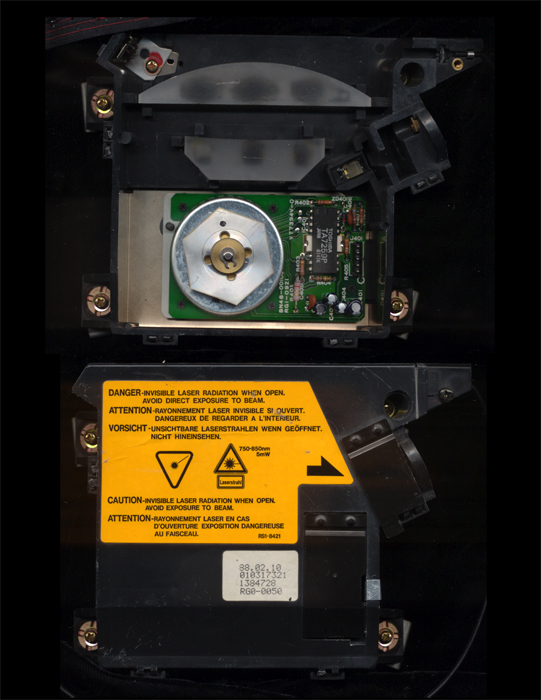
Spinning mirrors not perfectly aligned with the motor shaft make interesting patterns.
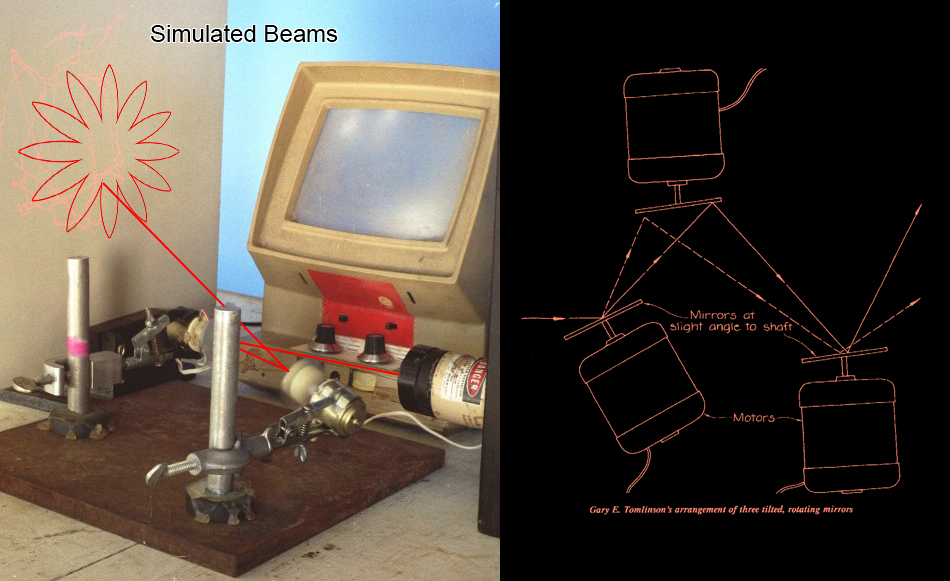
Close up of the arrangement:
A supermarket checkout scanner mirror assembly and a galvanometer scanner combined to make a Laser Oscilloscope:
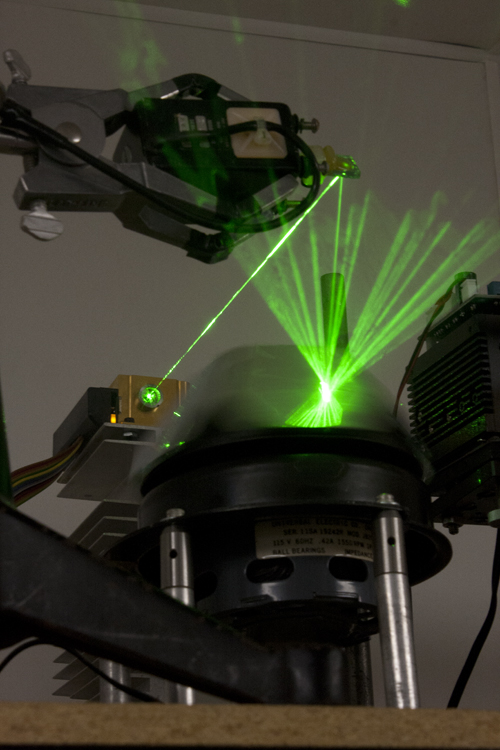
An orthogonal pair of mirrors allows you to see yourself in the orientation that others do.
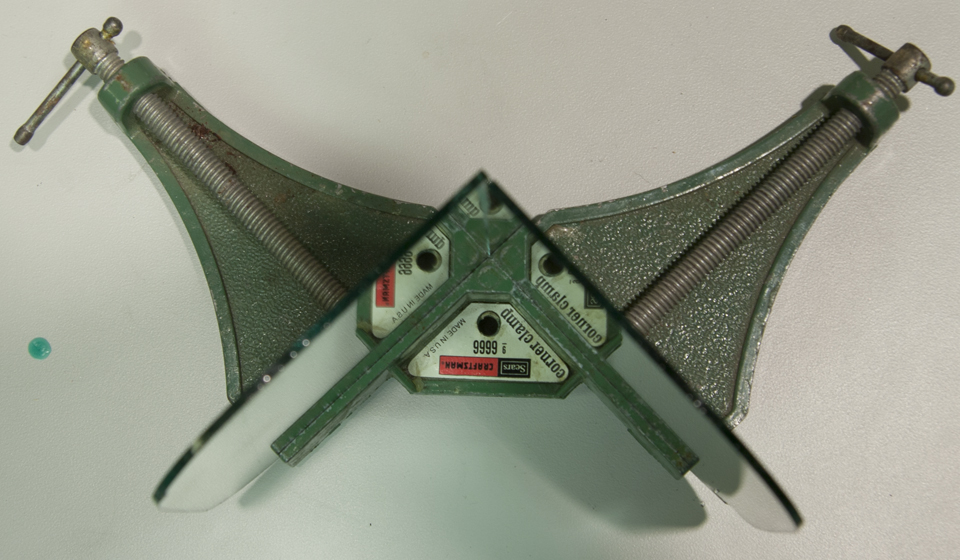

Partial reflection allows a candle to burn under water:
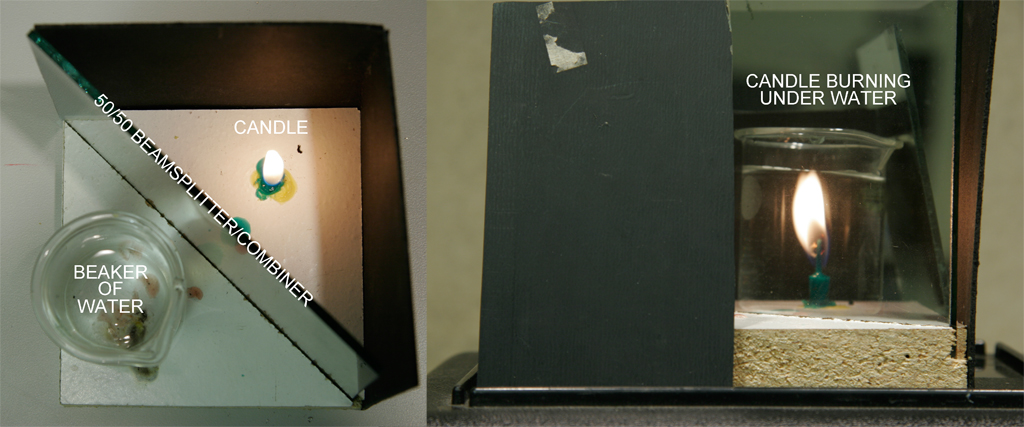
Another use for semi-reflecting mirrors:

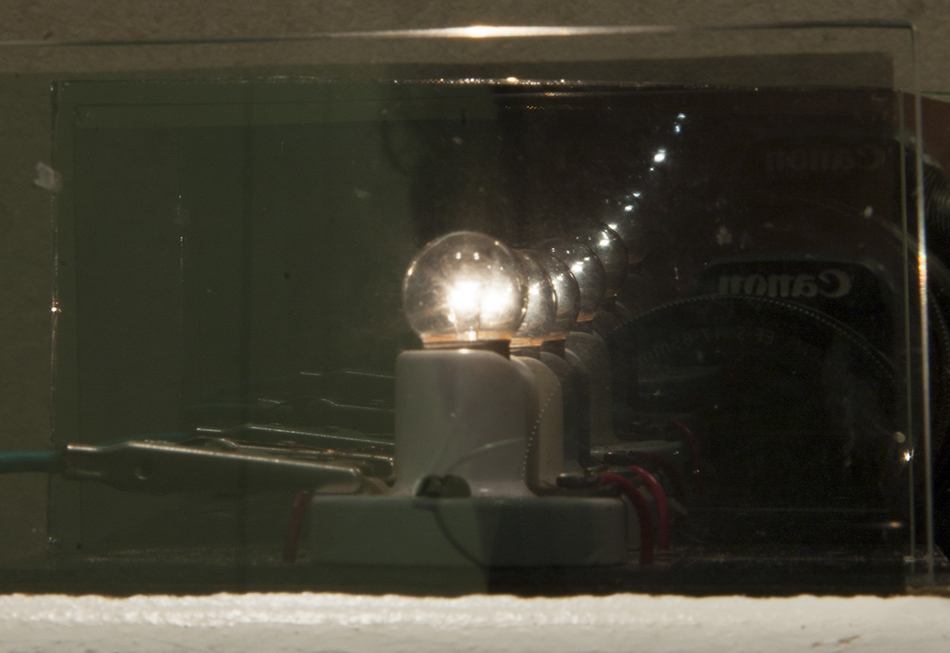
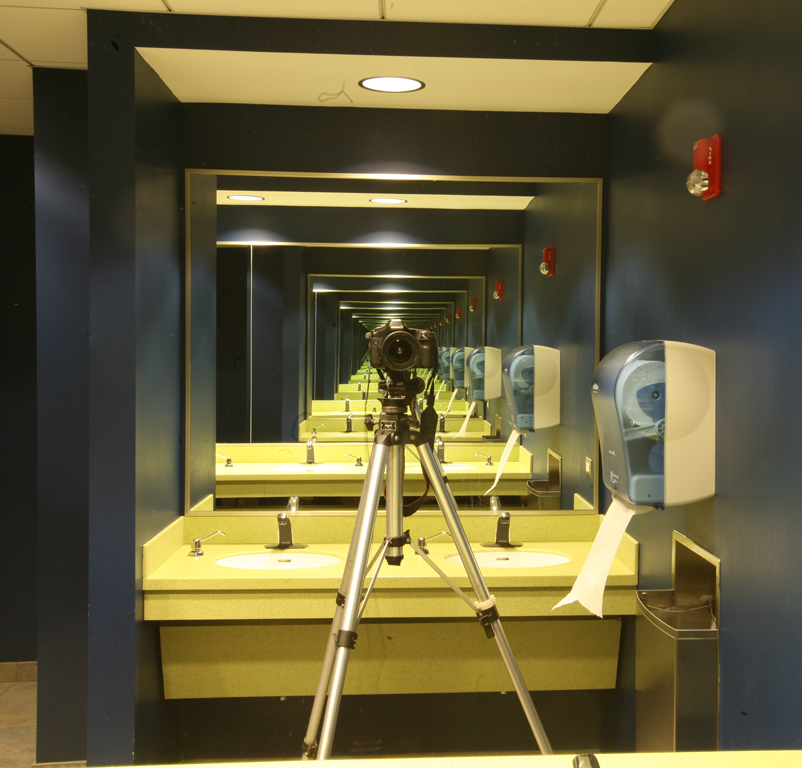
Finding Total Internal Reflection in an isoceles right triangular prism retroreflects the beam into a U-Turn. (Photo Credit, Allen Winston, HCD Class 2009)

Meeting or exceeding the Critical Angle traps a laser beam in a stream of H20. (Photo Credit, Allen Winston, HCD Class 2009; Apparatus built as a Final Project by Britt Black, HCD Class 2008.)
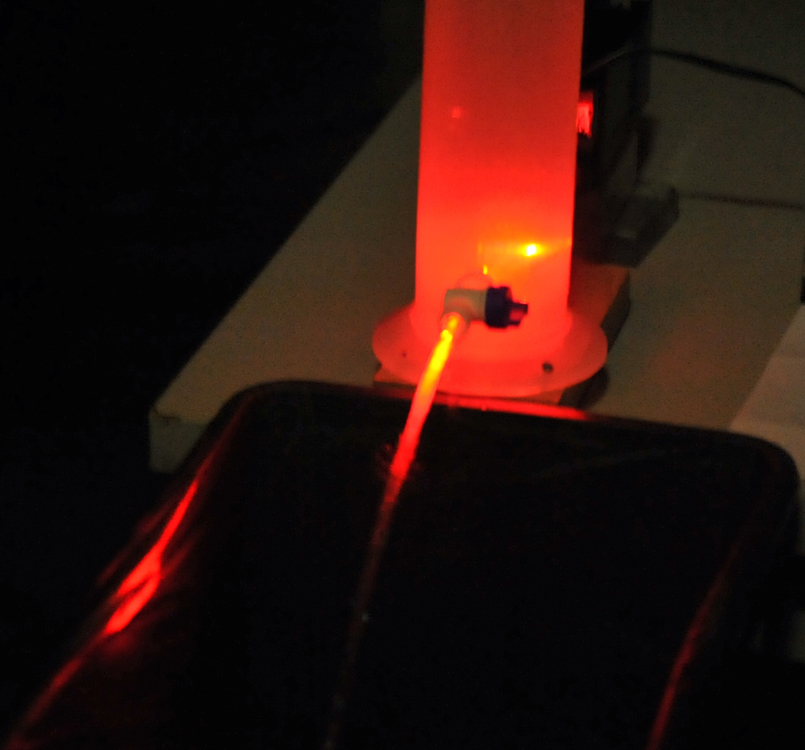
Other critical angle demonstrating devices:
More demonstration devices from this Chapter:
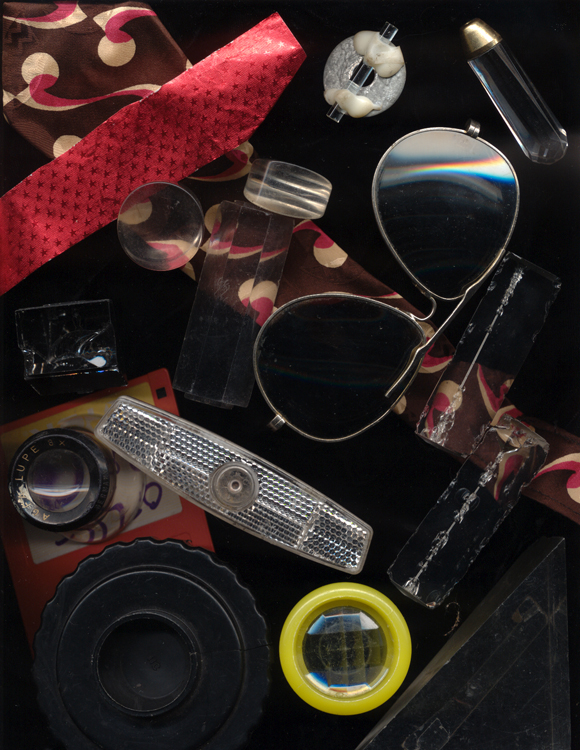
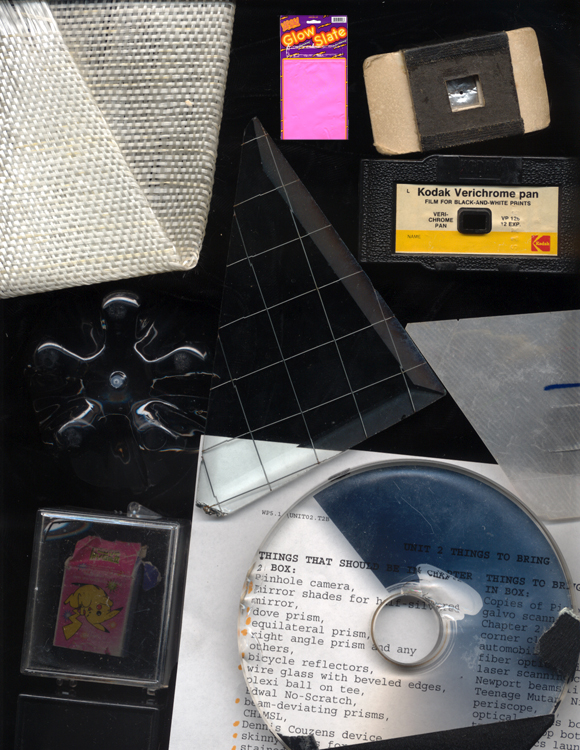
EYEWITNESS DEMONSTRATIONS: Recall what you saw.
How does the holographic incident angle finder work?
What is the test to determine if a source is a point?
Could you see the pinholes in the pinhole cameras?
What is the angle of the reflected ray compared to the incident ray?
What is the basic principle of the laser scanning light show?
Were you fooled by the "rabbit" box?
Where does the light go after having been bounced by a pair of mirrors at right
angles to each other? with 45 degrees between them?
What happened when you looked in the right angled mirrors?
What do you see when you look in a corner cube?
Why aren't bicycle retroreflectors made perfectly?
What is the difference between the day and night images in an automobile rear
view mirror?
What is the difference between specular and diffuse reflectors?
When does a diffuse reflector become a specular one?
Is the amount of light reflected from a piece of glass constant at all angles of
incidence?
When does the light reflected off glass become stronger than the light transmitted
through it?
How does light bend going in and out of the plexiglass pieces?
What happens to the view when tilting the large plexiglass block?
How does Edwal No-Scratch work?
Which equilateral prism bent light more, the solid plastic one or the water©filled
one?
What was seen in the two different ways of looking through the Dove (erecting)
Prism?
Why did the light stay in the stream of water?
What did the fiber optic launching mechanism look like?
How is the image transmitted in the TV Rock and endoscope?
How was the dispersing prism held when viewing the flourescent lights?
Maybe one of these days there will be images for all these demonstrations!